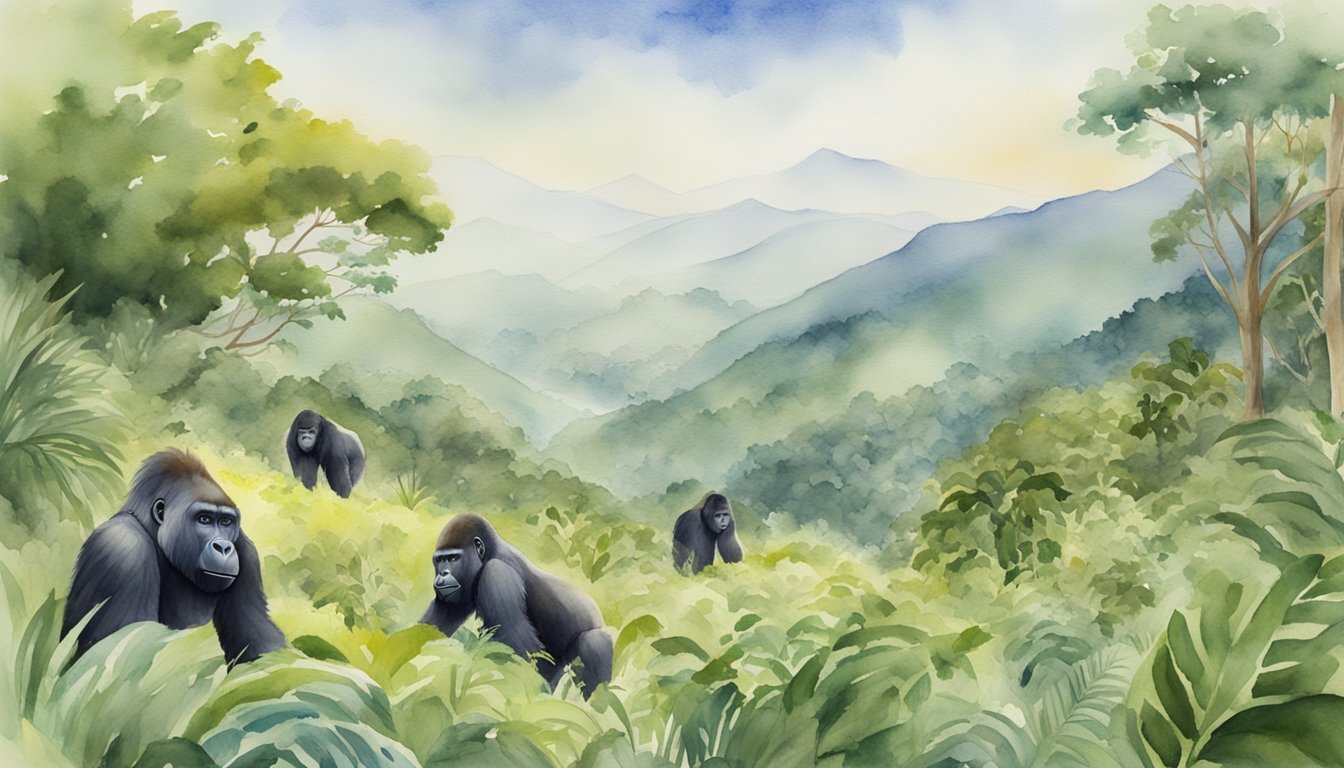Mountain Gorilla Overview
Mountain gorillas (Gorilla beringei beringei) are a subspecies of the eastern gorilla and are known for their impressive stature and sociable nature. They inhabit the cloud forests in high mountain ranges of central Africa, with their population mainly concentrated in the Virunga Mountains and Bwindi Impenetrable National Park.
Adult males are called “silverbacks” due to the distinct silver fur on their backs and can weigh up to 440 lbs. They are typically responsible for the protection and leading of the family group, which may include several adult females and their offspring—ranging from infants to juveniles known as “blackbacks.”
These great apes are among the most powerful primates and are largely herbivorous, consuming a diet rich in leaves, stems, and occasionally small insects. Their need for large feeding territories makes them vulnerable to habitat loss.
Despite their size and strength, mountain gorillas are considered critically endangered by the IUCN, with a total estimated population of only around 1,000 individuals. Conservation efforts are ongoing to ensure their survival, with emphasis on anti-poaching patrols and reducing human-gorilla conflict to safeguard these majestic mammals for future generations.
Habitat and Conservation

Mountain gorillas are a symbol of strength and resilience. This section delves into where these gorillas live, their unique adaptations, the serious threats they face, and the vital conservation work being done to ensure their survival.
Natural Habitat and Social Behavior
Mountain gorillas inhabit the dense forests at high elevations, particularly in the Virunga Mountains of Central Africa, which span across Rwanda, Uganda, and the Democratic Republic of Congo. In addition to the Virunga, they can also be found in Bwindi Impenetrable National Park. These gorillas have a complex social structure, living in troops that are led by a dominant silverback. Their home range is heavily dependent on the availability of vegetation and can vary significantly in size.
Diet and Physical Adaptations
Primarily vegetarian, the diet of mountain gorillas consists mostly of leaves, stems, bark, and roots. They are adapted to their habitat with longer hair and fur to cope with the colder temperatures at higher elevations, and their shorter arms compared to other gorilla subspecies allow for easier movement through their dense, mountainous environment.
Threats and Conservation Efforts
Mountain gorillas are critically endangered, with threats such as habitat loss, poaching, disease, and conflict posing significant dangers to their populations. Conservation efforts, including the establishment of protected areas, such as Virunga National Park and Mgahinga, along with anti-poaching patrols and continuous population monitoring by organizations like WWF, are essential for their protection.
Human Interaction and Future Prospects
The interaction between humans and mountain gorillas is a delicate balance. While ecotourism has provided funds and incentives for conservation, it must be carefully managed to prevent the transmission of diseases and disruption to their natural behavior. The future prospects for mountain gorillas will depend on the ongoing efforts in conservation and the mitigation of human-induced threats. Their fate is a reflection of our own commitment to preserving biodiversity and maintaining the integrity of their habitats.

